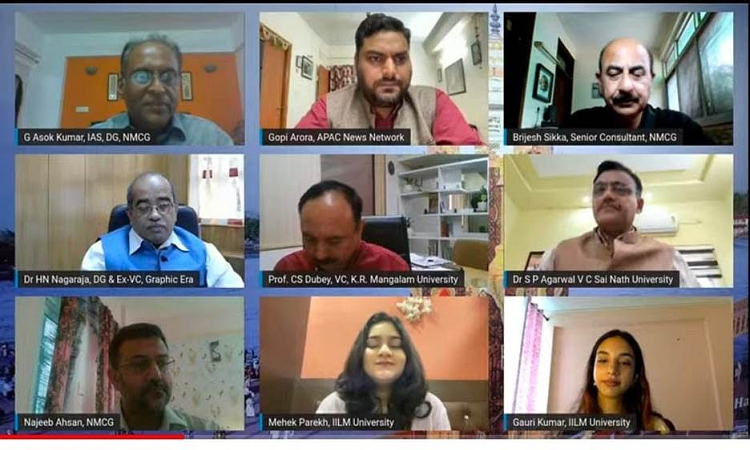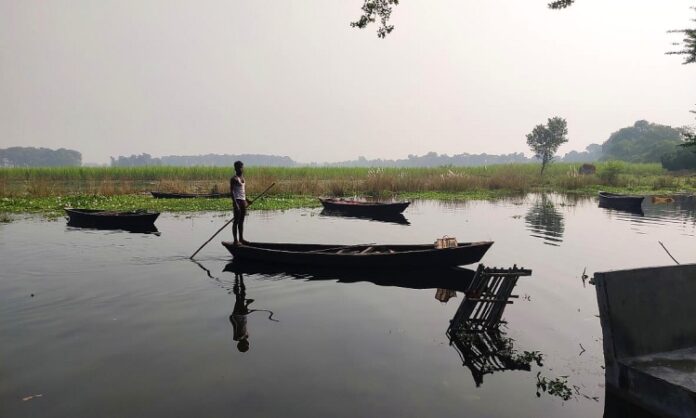New Delhi: About 35% of the wetlands have been lost in India since 1970, even as the number of Ramsar sites has risen over the years. The rate of disappearance of the wetlands is greater than that of forests, asserted senior consultant of the National Mission for Clean Ganga (NMGC) Brijesh Sikka in a webinar organised on the theme of wetlands conservation on Saturday.
The NMGC had organised the webinar as part of the monthly series to sensitise the students about the issues river rejuvenation. The event was presided over by NMGC director general G Ashok Kumar.
While underlining the significance of the wetlands in supporting livelihoods and biodiversity with assistance in recreation and cultural identity, Sikka lamented that continued degradation of wetlands had adversely impacted the sectoral development. He also stressed for developing a roadmap for integrating wetlands in the river basin management and adoption of a multi-pronged approach to rejuvenate the waterbodies.
Sikka also highlighted salient features of the National Plan for Conservation of Aquatic Ecosystems (NPCAE), with an overview of Ganga River basin and the integrated river rejuvenation activities being undertaken by the Namami Gange Project.
In his keynote address, G Asok Kumar talked about the importance of wetland conservation and their disappearance over the years adversely impacting the ecosystem in the Ganga basin. He emphasized the importance of wetlands in addressing the issues of control climate and its impact manifesting in various forms as they play a major role in maintaining natural cycles and offer support to a wide variety of aquatic species.

Kumar informed that India had signed the Ramsar Convention in 1982. He said that there are 75 Ramsar sites across the country, out of which 23 are in the Ganga Basin. After the year 2014, till now 49 wetlands have been identified and protected, spanning 13 lakh 26 thousand hectares of land. He noted that through the Namami Gange Mission, the Central government is working with full commitment towards the conservation of wetlands.
Also Read: With 11 new ones, India get 75 Ramsar sites in 75th year of Independence
Asserting the wetlands are the best natural solution for treating dirty water and ensuring good water flows in the river, the DG said, “Protection of wetlands is necessary as they play an important role in keeping the rivers rejuvenated in a cost-effective manner. Wetlands trap the water and store it for a longer period, ensuring continuous flow of water in the rivers. Besides, Wetlands also serve as water bodies to conserve rainwater as extensively exemplified in the ‘Catch the Rain: Where it Falls, When it Falls’.”
HN Nagaraja, director general & former vice chancellor, Graphic Era University, Dehradun, initiated his address by emphasizing the importance of supplying clean water to all and stressed on the relevance of maintaining the integrity of the rivers. With global warming and rapid increase in urbanisation activities, rivers are polluted and their water levels are unstable. He discussed issues of sewage infrastructure, cleaning of water, and the importance of maintaining the biodiversity of aquatic species to preserve the ecosystem.
Carrying forward the discussion on the current impacts of global warming, Prof Chandra Shekhar Dubey, vice chancellor, KR Mangalam University, Gurugram, spoke about the rivers becoming perennial to seasonal with rising mountains on the frontal portion. He said that this has been slowly cutting the rivers through the system on the land level. He also talked about an active interest and awareness within the public regarding conservation of natural resources, especially water, and addressed the initiatives under Namami Gange programme as a positive step towards a healthy future.
The panellists of the webinar included Najeeb Ahsan, senior communication manager, NMCG along with students of IILM University – Gouri Kumar and Mehek Parikh.




